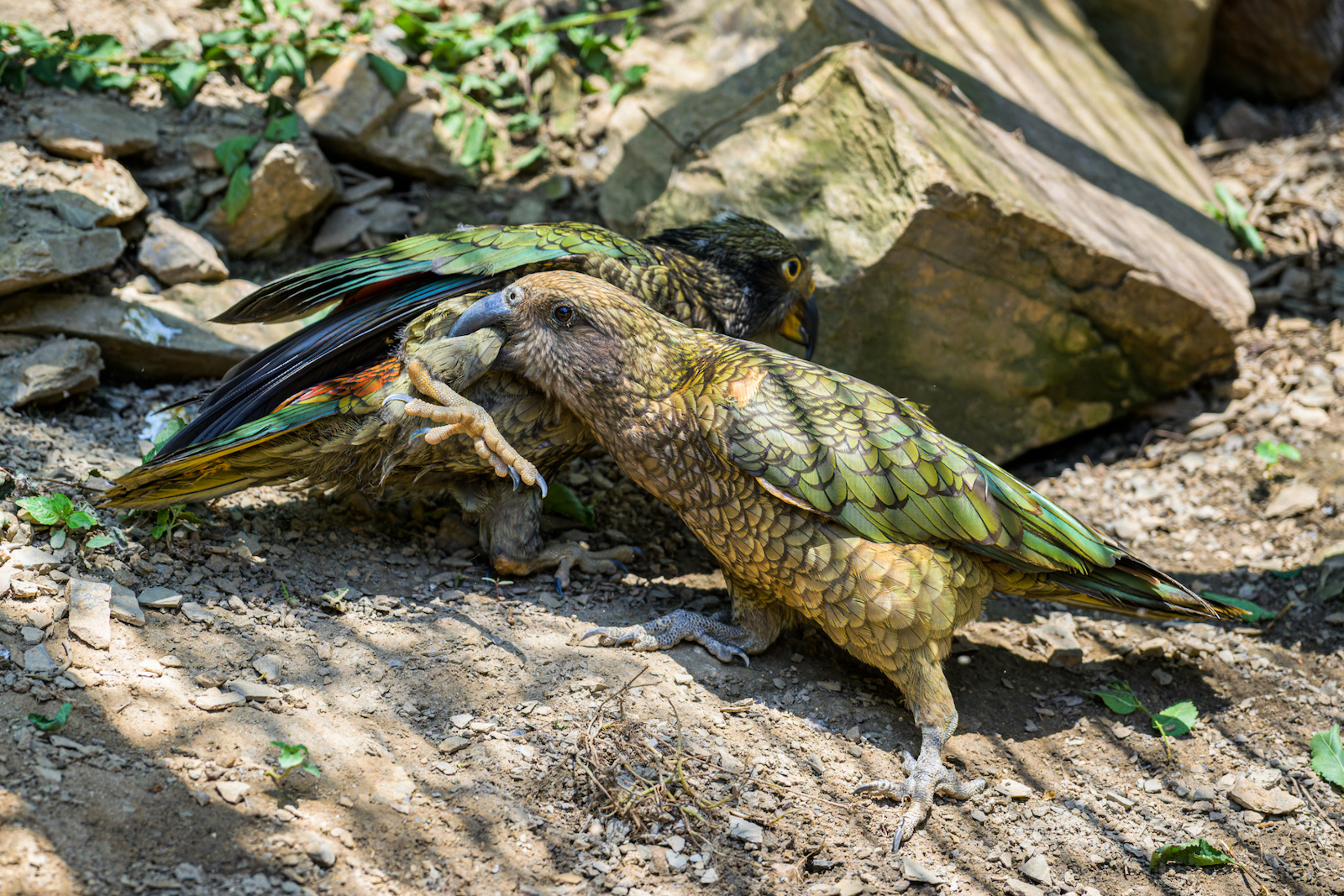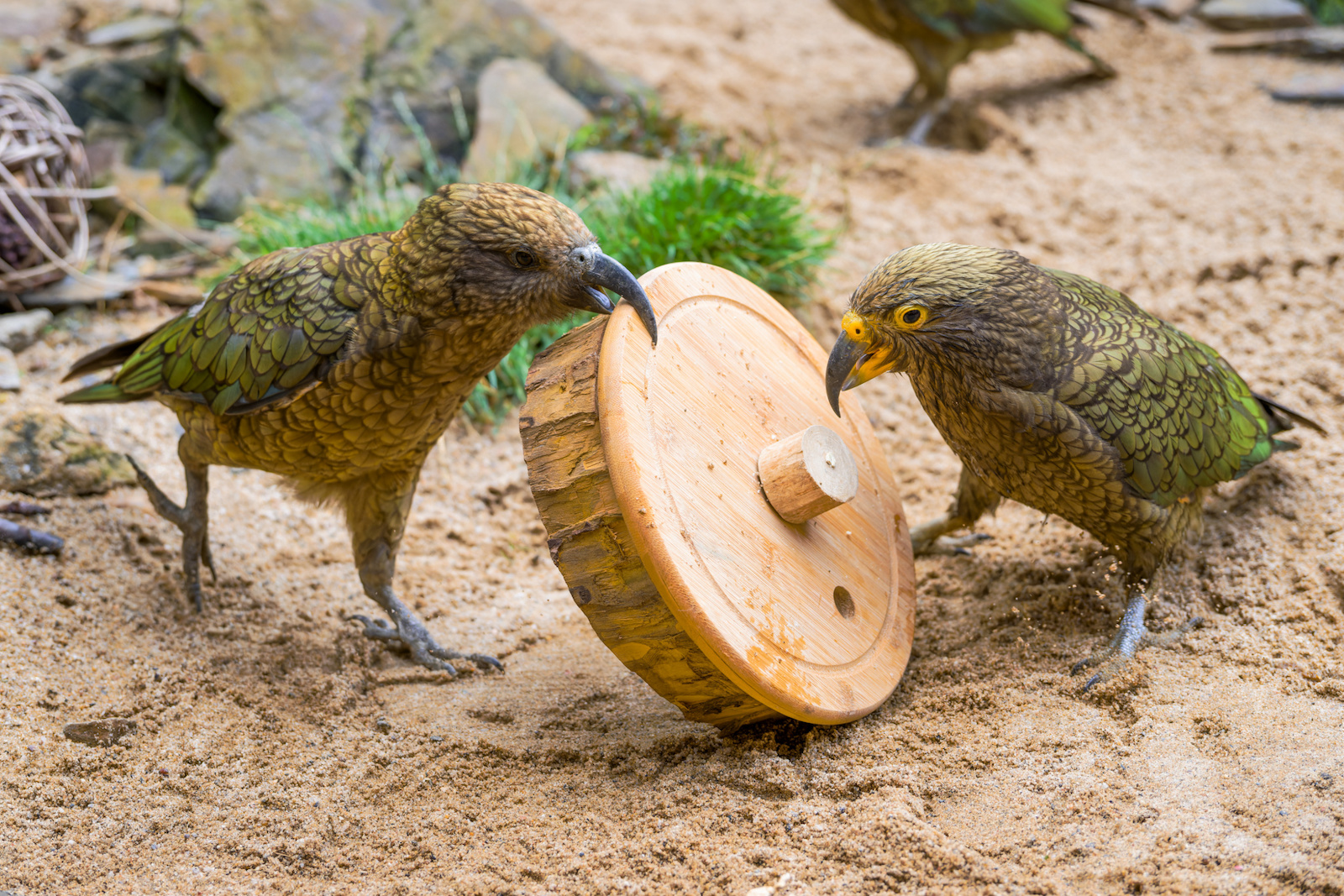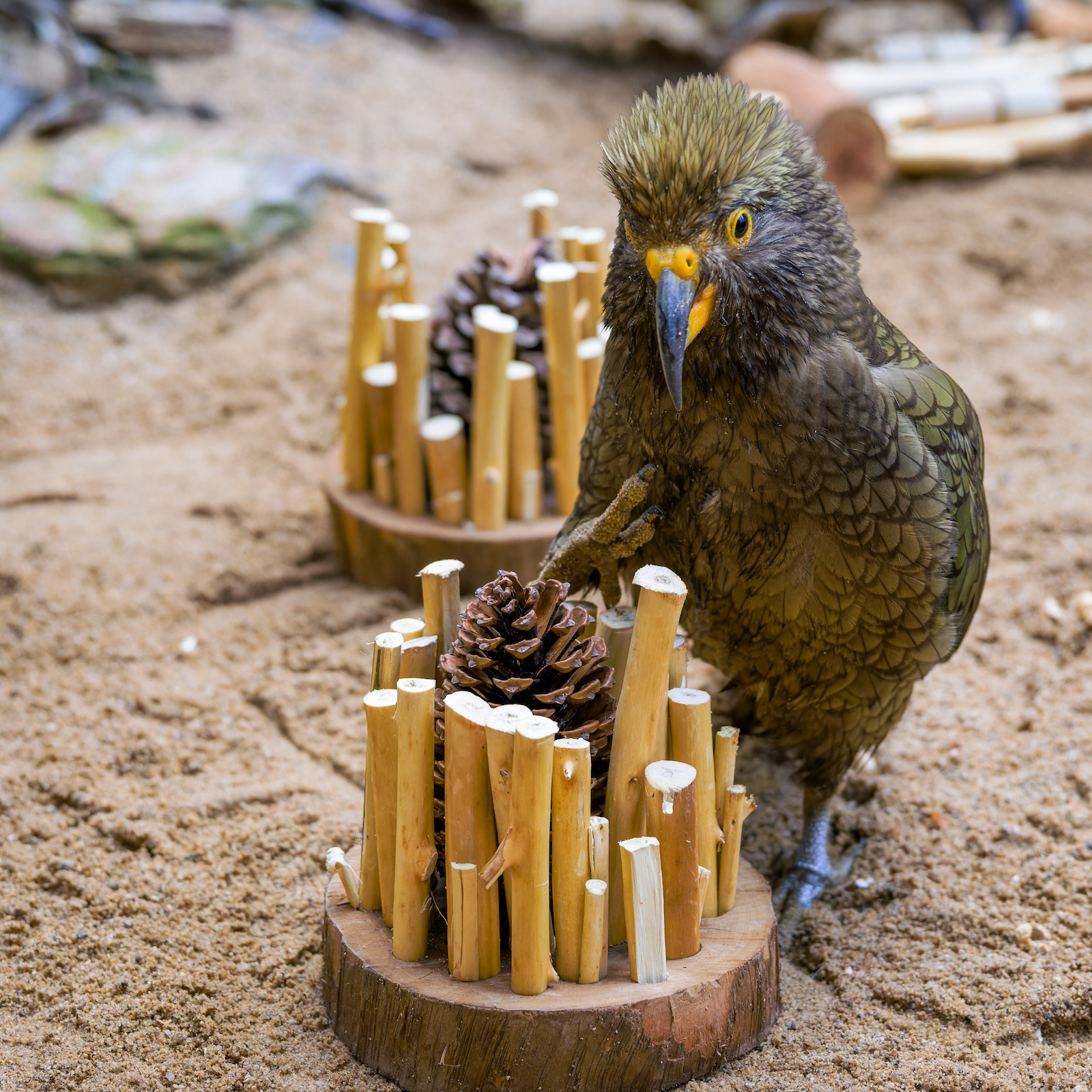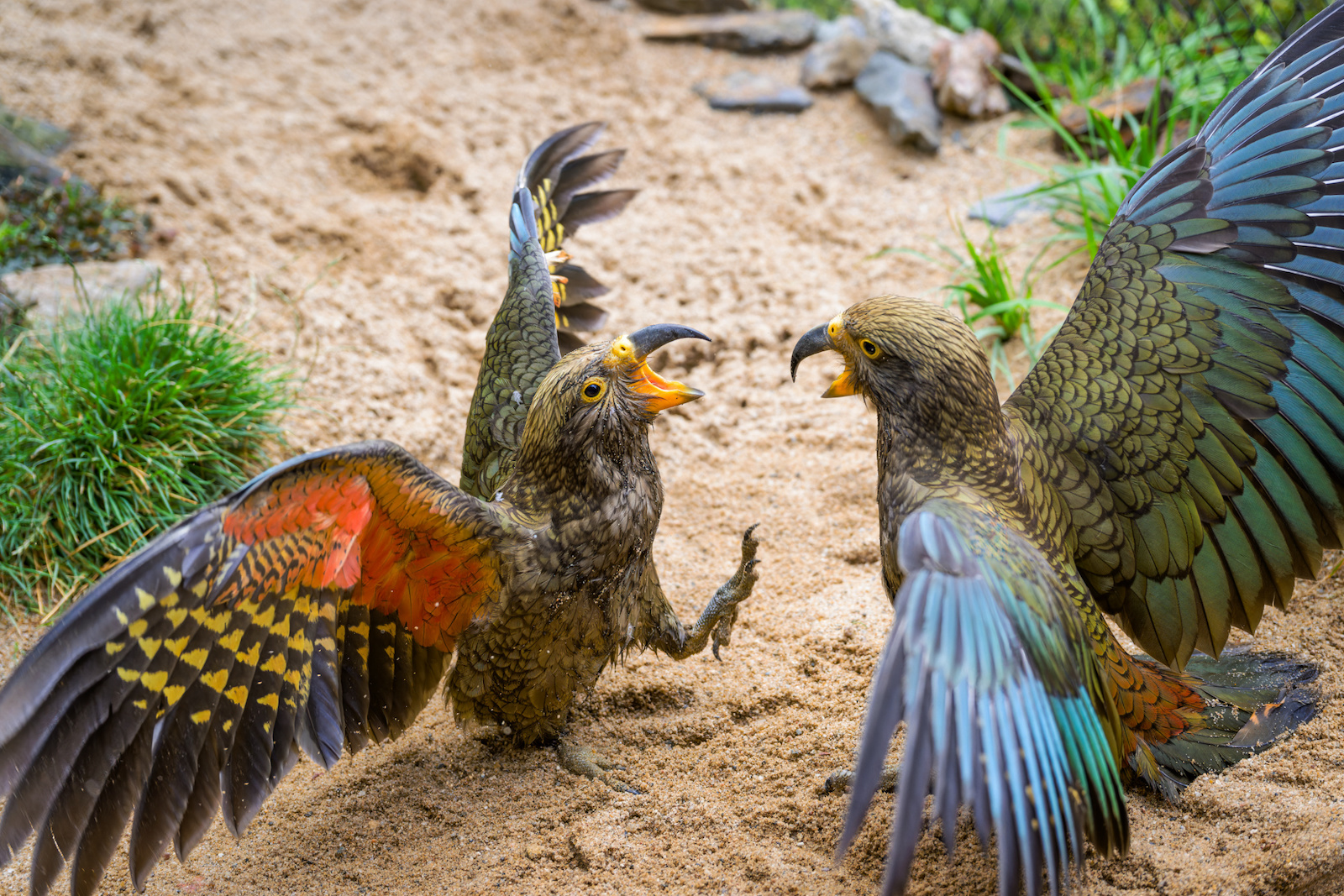
Acquaintance of a pair of cubs with their parents took place under the close supervision of the breeders. Among other things, the adults immediately explained the rules of the group hierarchy to the cubs. Photo by Petr Hamerník, Prague Zoo
Nestor kea chicks inhabited the exhibit together with their parents. The little parrots were artificially fed in the background and therefore only now became acquainted with the parent couple – male Rudy and female Judy. Today, the first aviary of the Rákos pavilion near the main entrance is very lively. In addition to the young, the current weather also contributes to this, which encourages these only high-altitude parrots in the world to be active.

The cubs joined the adults’ games almost immediately. The kea nestlings are exceptionally resourceful, and that is why they are regularly given various puzzles to play with at the Prague Zoo. In the picture, one such puzzle is solved by a pair of nesters with joint efforts: On the left, an adult, on the right, one of this year’s young. Photo by Petr Hamerník, Prague Zoo
“Basically, this is adoption by one’s own parents,” says bird curator Antonín Vaidl. This alternative breeding method has already proven itself here with short-tailed jays and several species of jays. In the case of parrots, however, it is a premiere at the Prague Zoo. “Judy, an inexperienced female, was nesting for the first time, so we preferred to place her eggs in a hatchery. The birds hatched at the turn of February and March, and we then hand-fed them in the incubator,” Vaidl describes the breeding, adding that these are the fourth and fifth chicks of this endangered species in the history of the Prague Zoo.
But small nesters had to be socialized in time with other birds of their species. Considering their intelligence, which is exceptional even among the generally very resourceful parrots, it was important to leave them isolated from other individuals only for the necessary time.

Enrichment is essential for these inquisitive parrots because, among other things, it keeps them in good mental condition. It often includes a reward in the form of a snack, which Nestor deserves to enjoy at the end of his efforts. Photo by Petr Hamerník, Prague Zoo
“At the beginning of the summer, we therefore placed the young in the nest hole behind the contact grid. That way she could get to know the parents and we could continue to take care of them and observe how they react to each other,” explains Vaidl. In the following weeks, the method proved itself. Juvenile sounds begging for attention roused a few adults to parental behavior. “When we removed the grid, the female was already more attached to the birds, but the male was more timid and tried to chase them away at first. In just a few days, however, we observed how he, too, feeds the two cubs and takes care of them in an exemplary manner.”

Nestor kea nestlings inhabited the exhibition of the Rákos pavilion. Seemingly inconspicuously colored, the parrot does honor to its order with its variegated underwings and coccyx. Photo by Petr Hamerník, Prague Zoo
Currently, visitors will find a group of four birds in the aviary. In addition to the already mentioned inquisitiveness, thanks to which nesters like to solve prepared puzzles and puzzles in the form of various enrichment elements, and adaptation to a colder climate, these New Zealand parrots are also special for their omnivorousness. In nature, they are able to catch small vertebrates, so boiled eggs as a source of animal protein add variety to the dose of root vegetables they are fed at the Prague Zoo.

